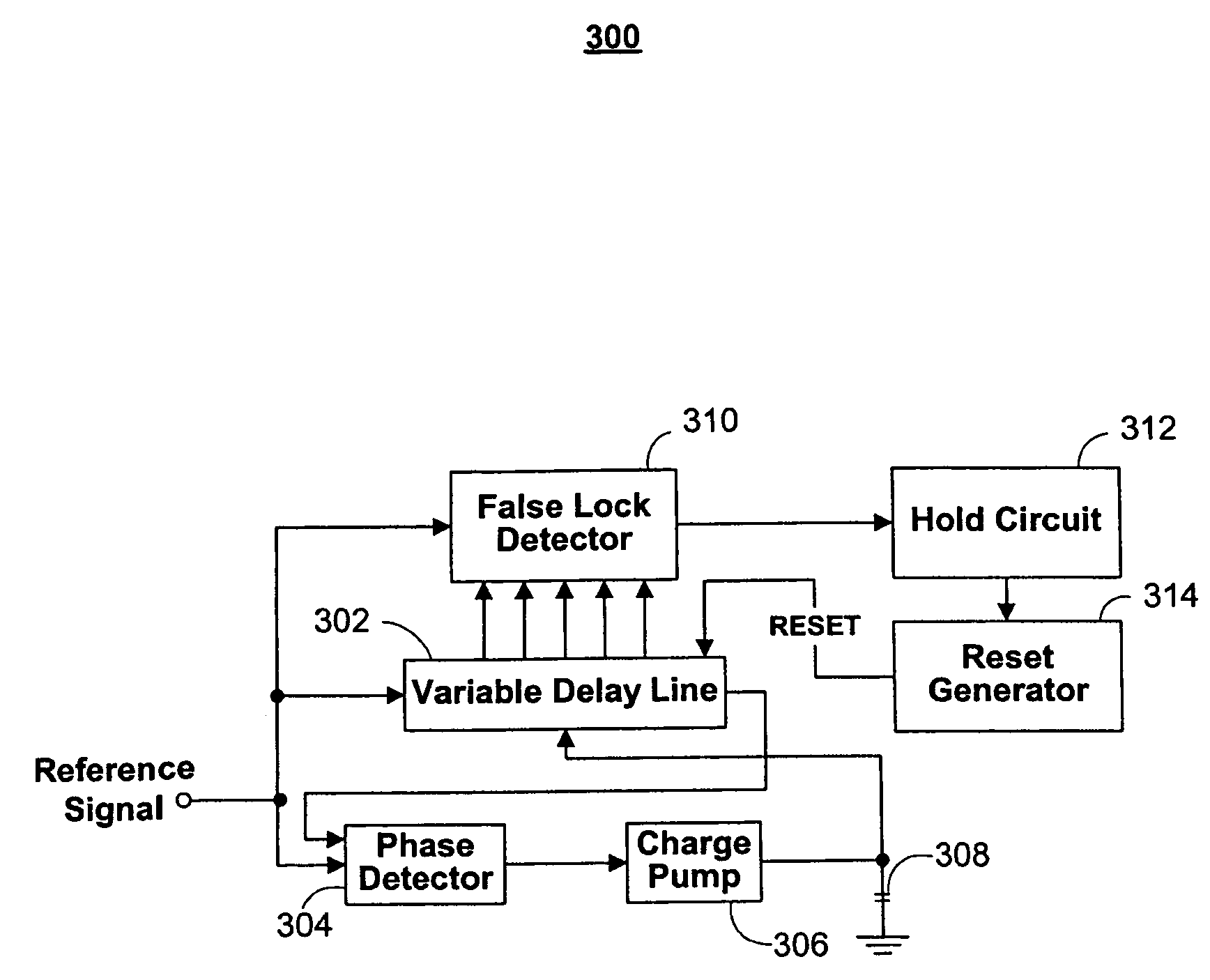Circuitry for eliminating false lock in delay-locked loops
a delay-locked loop and circuit technology, applied in the field of delay-locked loops, can solve the problems of dlls also suffering from problems, delay in the time it takes to receive the clock signal, and dlls may acquire false locks, and provide more delay than intended
- Summary
- Abstract
- Description
- Claims
- Application Information
AI Technical Summary
Benefits of technology
Problems solved by technology
Method used
Image
Examples
Embodiment Construction
[0023]FIG. 1 is an illustrative block diagram of a prior art DLL 100. DLL 100 may include a delay line 102, a phase frequency detector 104, a charge pump 106, and a capacitor 108.
[0024]Delay line 102 may include a plurality of delay elements 103 connected in series. The number of delay elements may determine the incremental delay that may be provided by DLL 100. For example, in correct lock the total delay on delay line 102 is one period, thus a three-element delay line may provide delay to a signal in increments of thirds of a period, whereas a ten-element delay line may provide delay to a signal in increments of tenths of a period. Each delay element 103 may be controlled by a common control voltage (output by charge pump 106), such that all the delay elements contribute the same amount of delay.
[0025]The control voltage may be monotonically increasing with the delay or monotonically decreasing with the delay. For example, if the control voltage is monotonically increasing with th...
PUM
 Login to View More
Login to View More Abstract
Description
Claims
Application Information
 Login to View More
Login to View More - R&D
- Intellectual Property
- Life Sciences
- Materials
- Tech Scout
- Unparalleled Data Quality
- Higher Quality Content
- 60% Fewer Hallucinations
Browse by: Latest US Patents, China's latest patents, Technical Efficacy Thesaurus, Application Domain, Technology Topic, Popular Technical Reports.
© 2025 PatSnap. All rights reserved.Legal|Privacy policy|Modern Slavery Act Transparency Statement|Sitemap|About US| Contact US: help@patsnap.com



